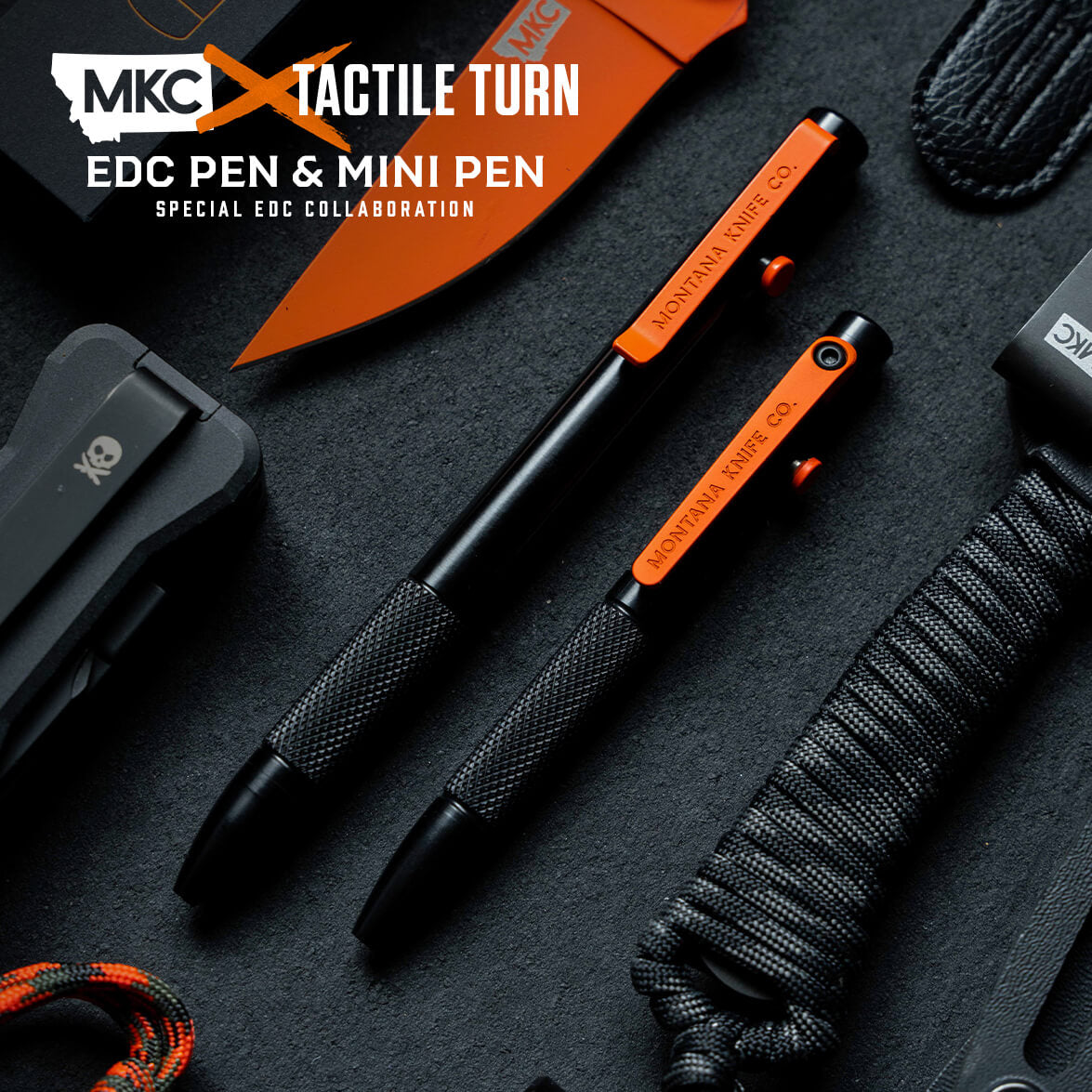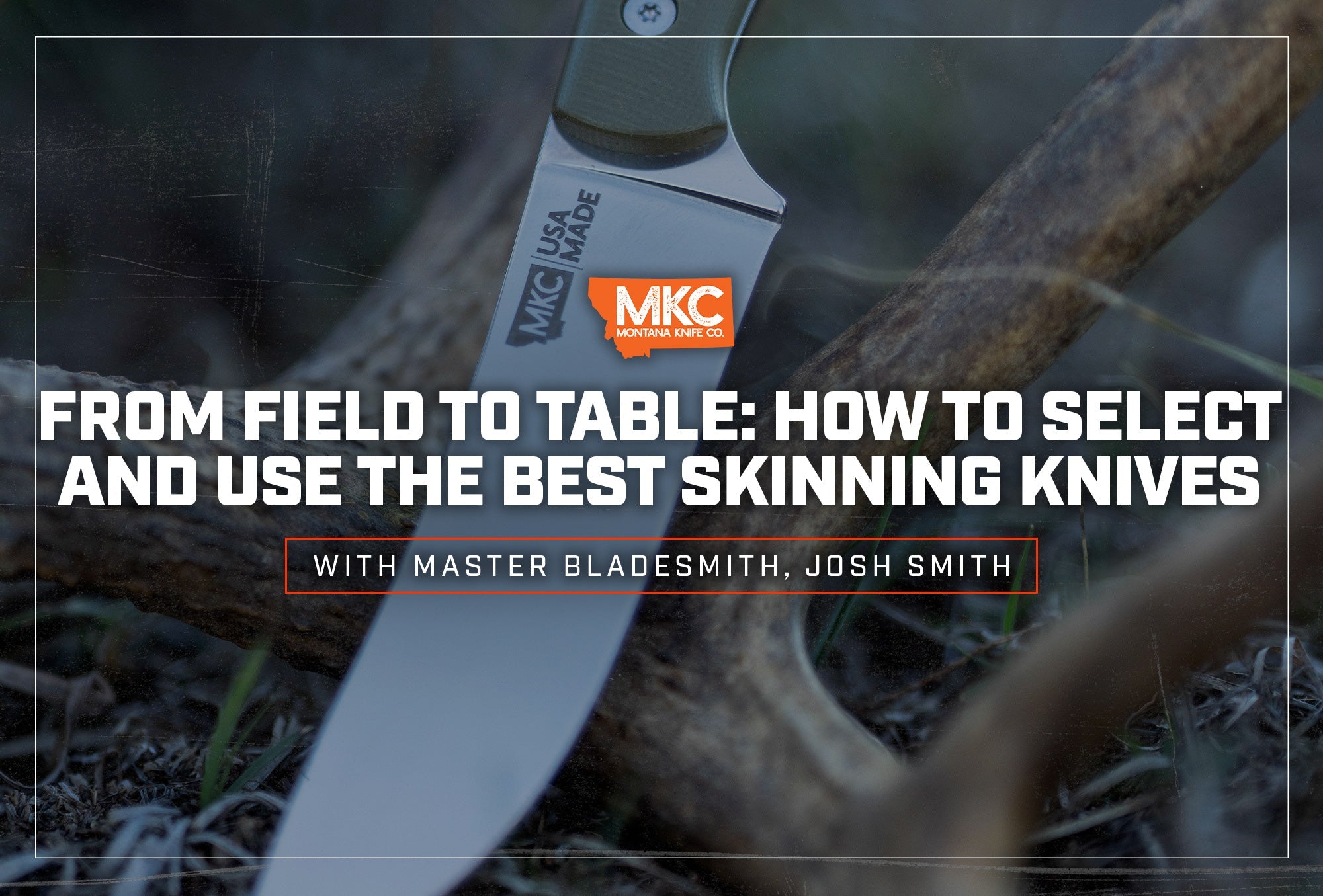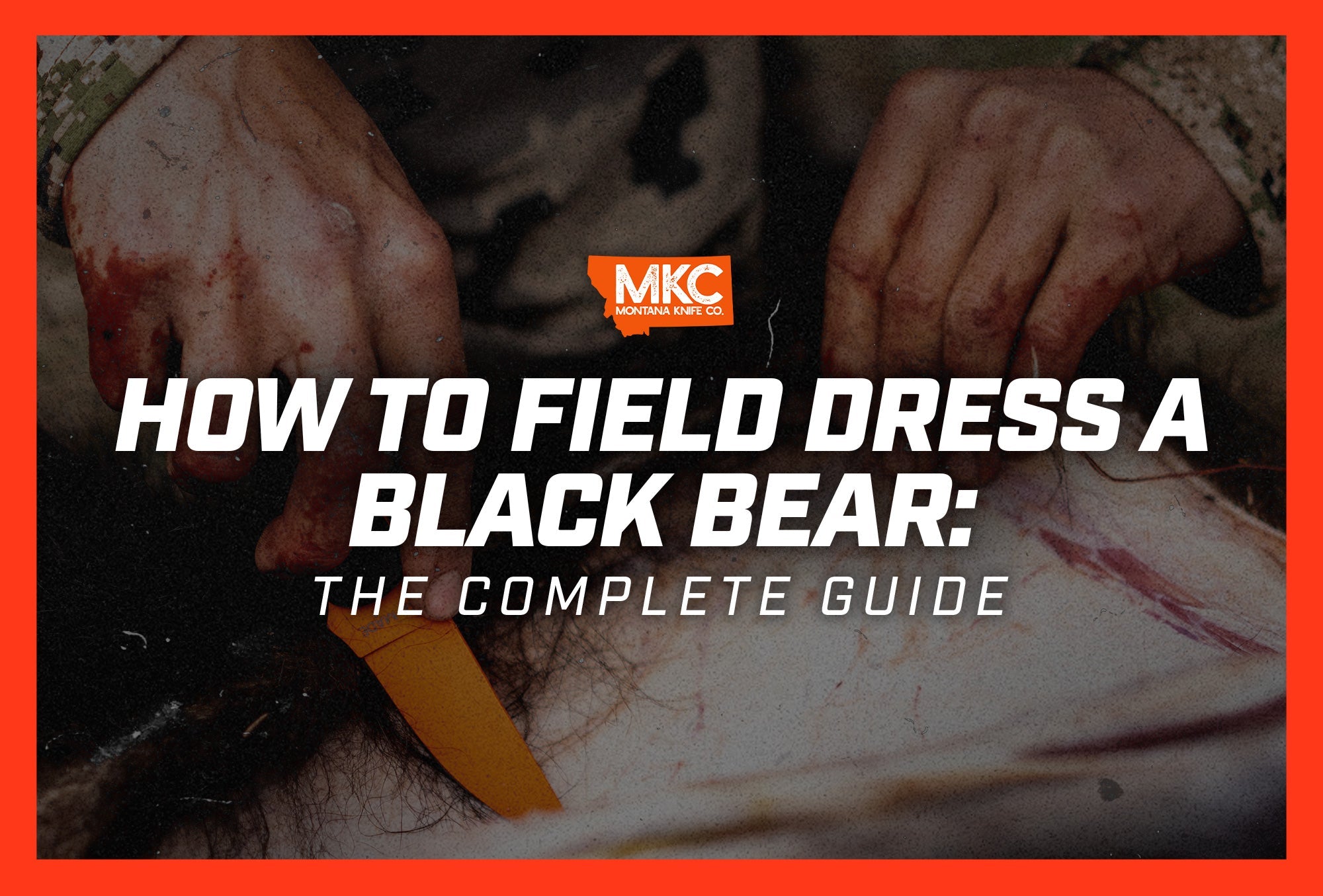MKC’s Marshall Buschcraft knife is a novel design for us here at MKC. We created it for the weekend adventurer who wants to test their survival skills in the wilderness. It’s perfect for building shelters, trapping, feeding fires, and more.
Many MKC fans watch reality television shows like “Naked and Afraid” and “Alone.” We saw the need for a wilderness survival knife suitable for those scenarios. Our fans demanded a blade with the same effectiveness as our hunting knives, but with more do-it-all field functionality.
A survival knife isn’t the same as a hunting knife. While you can use the two interchangeably, survival and bushcraft knives tend to be bigger. They excel in emergency and field situations, but they lack some of the finesse that our purpose-built hunting knives have.
While we design all MKC knives with strong fixed blades that can get you out of sticky situations, their primary functions vary. This is where the bushcraft knife (or survival knife) comes into play. We’ll teach you how to use a survival knife in the sections below.

How to Use a Survival Knife: Building Shelter
If building a fire is the most important action you can take in a wilderness survival situation, preparing food comes in second, and building a shelter comes in third. But depending on the circumstance (how hungry you are, the weather you’re caught in, etc.), shelter could become just as crucial.
Not all knives are suitable for building shelter. You’ll need a knife that can chop trees or tree limbs to make poles, cut leafy branches for cover, or cut through ropes and tarps, if you have them. You can even use a survival knife to drive tent stakes or dig shallow holes in the ground.
How to Use a Survival Knife: Self-Defense
In an extreme survival situation, knowing how to use a survival knife to stay alive is indispensable information. Self-defense is especially important in the event of a catastrophe, when you might have to worry about wild animals and other human beings threatening your safety.
It’s better to have a survival knife and not need it than to need a survival knife and not have it. A good survival knife is not just an equalizer to the surrounding circumstances — it’s also an equalizer in a fight against a more dangerous foe. Even if you don’t EDC a blade at home, keep it with you in the wilderness.
How to Use a Survival Knife: Foraging for Food
While foraging for food doesn’t carry the same stakes as hunting live game, keeping a survival knife with you is still a good idea. Foraging for wild edibles can take many forms, and a survival knife allows you to make clean cuts on wild edibles, crush or crack nuts, and even dig for edible roots and plants.
A foraging knife is especially useful for gathering mushrooms. A sharp survival knife lets you cut the mushroom as close as possible to its substrate and preserve the hidden mycelium network below. Please use caution while foraging for mushrooms, and if you’re not sure if it’s safe, don’t eat it!

How to Use a Survival Knife: Fishing
Having a survival knife on hand while fishing is incredibly helpful. Of course, a good knife lets you fillet and clean fish, but it’ll serve you well in the act of fishing, too. Knowing how to use a survival knife allows you to carve hooks from wood, cut line, fashion a wood pole for fishing, and more.
If fishing with a line and pole doesn’t work for you, use your survival knife to fashion a spearfishing setup. You can either attach your knife to a long branch to create a sharp spear, or you can carve the end of said branch for a more primitive effect.
How to Use a Survival Knife: First Aid
No man (or woman) should enter the field without a first-aid kit, whether that’s for hunting, backpacking, or otherwise. While a survival knife might not come to mind as a first-aid tool, it can certainly come in handy. Use it to cut bandages, remove stingers and splinters, or even cut away clothing in an emergency.
While every good survivalist needs a high-quality tourniquet in their first-aid kit, if you misplace yours, knowing how to use a survival knife can help you approximate an alternative. Use it to cut strips of fabric and tie them to limbs to stem blood flow. Use this same strategy to fashion a splint out of nearby branches if you or a friend suffers a broken limb.
How to Use a Survival Knife: Finding Water
You’ll find that knowing how to use a survival knife comes in especially handy in cold-weather survival situations. Use it to cut holes in ice to access fish and fresh water, or to cut chunks of ice and snow to keep food fresh or to build a shelter.

How to Use a Survival Knife: Final Thoughts
Do you feel inspired by the survival tests you see on TV? Are you ready to test yourself against Mother Nature? Don’t be afraid to put yourself out there if those sound like your idea of a good time. However, taking on these challenges with preparation and practice is important.
Having a bushcraft knife with you is just half the battle. Knowing how to use a survival knife to its fullest potential completes this skill.
by Josh Smith, Master Bladesmith and Founder of Montana Knife Company






































